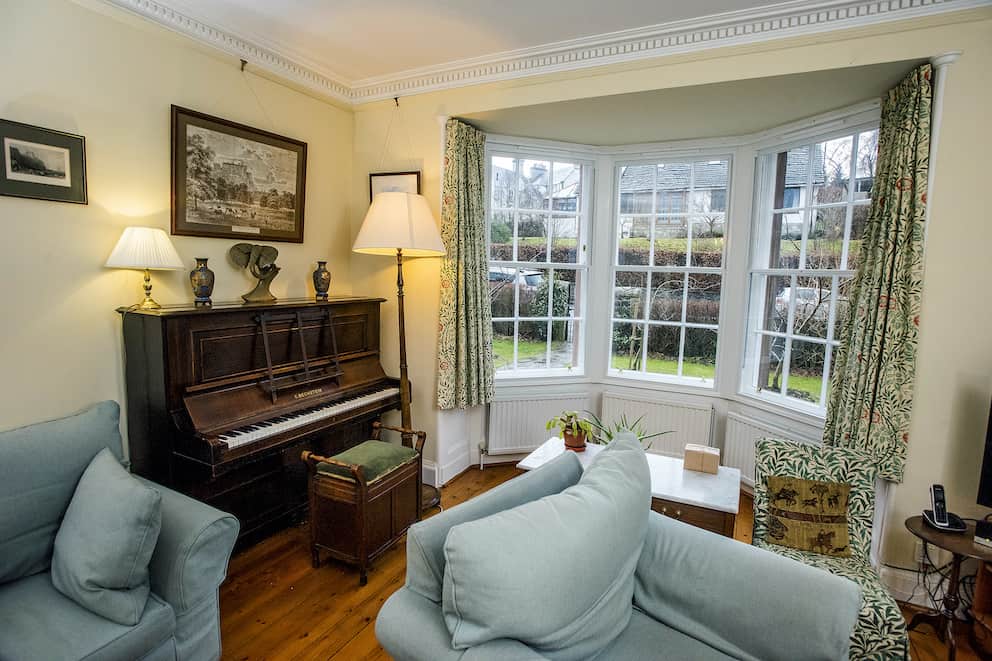When deciding what product to buy, Clearview customers weigh up the pros and cons of double glazing versus secondary glazing. At first glance, these options may seem very similar, but a closer analysis reveals key differences. Here’s a brief comparison:
What is double glazing?
Most double glazing consists of a sealed glazing unit of 2 glass panes usually separated by an air gap of 10-20mm. The air gap helps with thermal insulation, particularly with coated glass and when the air gap is filled with an inrt gas.
What is secondary glazing?
Secondary glazing introduces a completely separate pane of glass, which can be attached to the window or door in a variety of ways. This means that the original window does not need to be disturbed. Depending on your needs, there are also semi-permanent options that are even less invasive to your property.
How do they compare?
Historical preservation
In new buildings, where Building Regulations make double glazing virtually compulsory, double glazing can lead to energy savings. However, in period property, replacing original windows with double glazed units can create a dramatic, unattractive change in a property’s appearance, because of the need for thicker timber sections and glazing bars, and the flatness of new glass. Double glazing is not normally permitted in listed buildings, in order to protect the original appearance.
To maintain a period property’s authenticity, fitting secondary glazing and repairing and renovating the original windows rather than replacing them is the better option. This is especially true in buildings with decorative windows that have survived centuries. Simply put, double glazing means a loss of historic fabric.
Less waste
Disposing of the original primary window and introducing a bulkier, new double glazing uses more than 3 times the materials compared to a secondary system. Factor in that secondary glazing requires no re-decoration and it’s easy to see why choosing secondary glazing is less damaging to the environment.
Unlike double glazing, secondary glazing is usually recyclable. Should you ever need to change or upgrade your secondary glazing, disposal involves minimal waste.
Thermal insulation
As previously mentioned, double glazing’s benefits can be overstated compared to other glazing methods. Enhanced energy efficiency and comfort is not just the preserve of double glazing! Significant draught reduction is also a major benefit of secondary glazing. Technical advances and modern production methods make it possible for secondary glazed windows to exceed the performance of double glazed windows.
This not only reduces your environmental impact, but reduces the cost to keep your home warm by as much as 15%. Particularly as energy costs soar, this can be the difference between a warm winter or a chilly season.
Noise reduction
Wherever you live, outside noise can have a real impact on your quality of life. For noise reduction, double glazing is often no more effective than single glazed units, in fact for traffic noise reduction, they can perform less effectively. The overriding factor in noise reduction is well fitted, draught-proofed windows.
Secondary glazing’s larger gap between glass panes is a better noise insulator, as the sound waves get lost before they get inside. In fact, some people choose to get secondary glazing even if they already have double glazing, due to the superior noise insulation. This way, they can be confident that the outdoor world won’t disturb your sleep or work.
Security
Secondary glazing also provides a level of security that doesn’t come with double glazing. As windows and doors are one of the main entry points for intruders, they need the most security to protect your property.
Double glazing involves thickening the glass, but if a burglar forces the lock, they can get inside. By installing secondary glazing, you add a whole extra structure that trespassers would have to break through. Many secondary glazing can also be reinforced, both in the glass itself and in the locks.
Condensation prevention
Both double and secondary glazing use a similar principle to prevent condensation. Condensation occurs when warm air comes into contact with cold surfaces, in this case the window. The moisture in the air is cooled down so much that it condenses into a liquid, known as condensation.
However, this can be prevented by adding a second layer of glass, trapping air between the two. The air prevents the inside pane from becoming as cold as the outside pane, meaning that the air inside doesn’t cool enough to become liquid.
Both double glazing and secondary glazing use this method, but the way that secondary glazing works gives you more control. Many types of secondary glazing allow you access between the panes of glass. If the problem persists even after window renovation, you can place silica bags between the windows to absorb residual moisture.
Further comparison
If you are weighing up the benefits of secondary glazing, these pages and downloads may help:

 10 Year Guarantee
10 Year Guarantee 5 Star Customer Reviews
5 Star Customer Reviews

